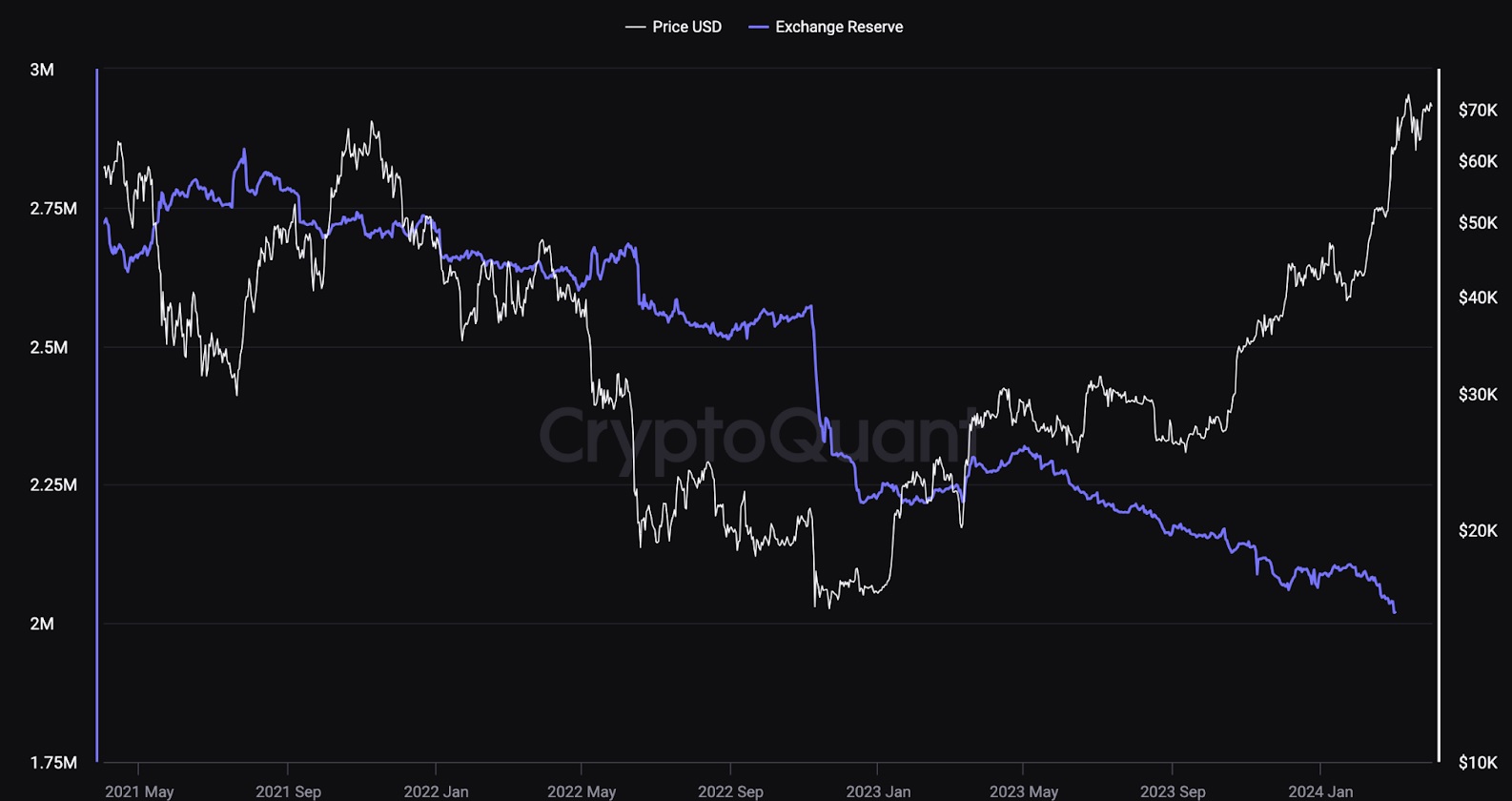Bitcoin to Vanish from Exchanges in 9 Months, Bybit Warns!
Bybit's analysis of the recent bitcoin halving event indicates that the declining bitcoin (BTC) reserves found on various exchanges can be primarily attributed to a surge in investor retention combined with a decrease in mining outputs. The halving event, which drastically cuts the rewards given for mining new bitcoins, reduces in half the quantity of coins added to the market. This reduction often leads to a tight supply situation, which is exacerbated by an increased tendency among investors to retain their assets for longer periods.
Furthermore, there has been a consistent growth in institutional interest in bitcoin, especially with the introduction of spot bitcoin exchange-traded funds (ETFs) in the United States, as Bybit's report elaborates.
According to this report, institutions are increasingly perceiving bitcoin as a stable asset, which has sparked a significant rise in investments from both entities familiar with cryptocurrencies and those from the traditional financial sector. This trend of acquisition and retention among these investors has contributed to a decrease in the quantity of actively traded bitcoin on exchanges.

Bybit’s research points out that “Bitcoin reserves across all centralized exchanges are depleting more rapidly. With only 2 million bitcoins remaining, and assuming a daily inflow of $500 million to [spot bitcoin ETFs], about 7,142 bitcoins are expected to be withdrawn from exchange reserves daily. This rate of withdrawal implies that it could take only nine months to exhaust all remaining reserves,” the researchers explain in their analysis.
The report adds:
‘’With this in mind, it’s unsurprising that bitcoin’s price may continue to climb before the halving, or even afterwards, as the supply squeeze propels the price to another new record’’.
The report also underscores a shift in investor behavior, showing a marked rise in the proportion of BTC stored in cold storage, which involves keeping the cryptocurrency offline to enhance security and diminish the propensity to sell, thus aiding in alleviating supply constraints. This trend is driven by an optimistic market outlook and an eagerness to capitalize on potential future price increases, as suggested by Bybit’s data.
Bybit postulates that if the existing trends persist, the general bitcoin market could experience further tightening of BTC supply. This tightening could potentially elevate prices as ongoing demand surpasses the decreasing supply. This prognosis is backed by their examination of previous market dynamics during comparable conditions, which typically resulted in substantial price increases.








